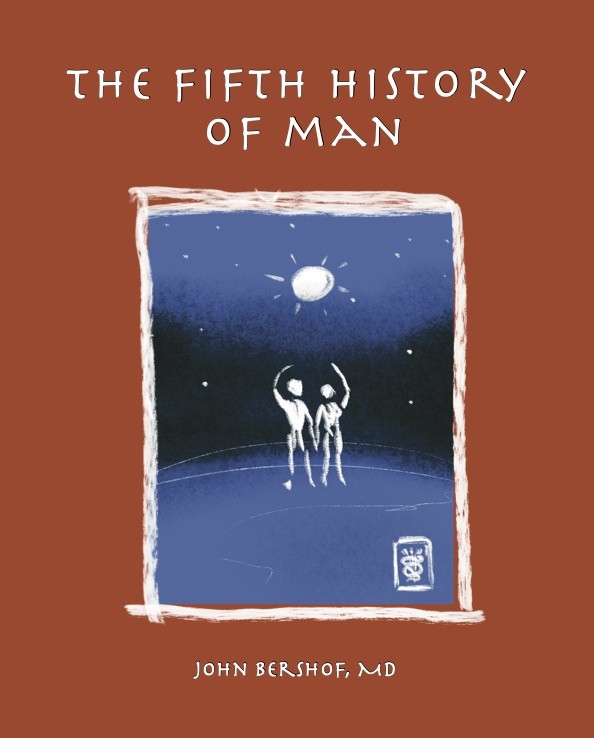
To paraphrase the great sci-fi writer Stephen King: Kill your darlings, kill your darlings, even when it breaks your heart, kill your darlings. Translation: stay on point and mercilessly avoid side stories and anecdotes. With much respect for Mr. King, The History of Man Series is precisely that, a great deal about all those little darlings, a style of writing termed “jumping off.”
The Second History of Man focuses mostly on bacteria and bacterial infections as the foundation, jumping off into Darwin and evolution, gin & tonics and the discovery of the first antibiotic to treat infection (and it wasn’t penicillin), visiting with those clever chaps who cook up drugs in the lab. We’ll call upon poets & poetry, celebrities like Frank Sinatra, the Rat Pack, and Bobby Darin, the classical music of Haydn, Mozart and Beethoven, the tragic story of World War II, Anne Frank and the Holocaust, tuberculosis, and a few of the rich & famous who suffered from TB, travelling back in time to the Black Death which wiped out 25 percent of humans on Earth, exploring the origins of a salon and a saloon, Columbus and the Age of Discovery, the lost generations of childhood, ending with the invention of the Internet.
The History of Man Series is written in a jumping off style, using medicine, disease, and health themes, fleeced of the normal jargon that all too often accompanies science narratives, as the foundation to jump off into history, world history, human history, American history, ancient history, biographies, celebrities and the rich & famous, the body, aging & longevity, science, biology & nature, physics, even some math thrown in, anatomy, a travel book of geology, geography, continents, Europe, Asia, Africa, America, South America, Australia, even the North Pole & South Pole, astronomy, the Universe & cosmos, war, politics, nature, art, music, romance, folklore, religion, the Bible, mythology, sports & athletes, weather, climate change and global warming, and maybe even some non-prescriptive self-help commentaries tossed in for good measure. For the print and eBook versions, comics interspersed to add some humor. And to add yet another twist to the writing style, another layer, each book showcases some personal anecdotes Dr. Bershof experienced during his life in medicine, a few biography sketches of suspense & thrillers that reveal a glimpse how the mind of a doctor works … or doesn’t work.
We’ll cherish all the darlings we encounter on our travels as they tell the tale of the humanity that remains eternal in all of us, in all its splendor and all its tragedy. All human activity and that of the Universe lies within our scope. Unlike Bryson’s wonderful book A Shorty History of Nearly Everything, a must read, this series makes no apologies for being a tome about nearly everything.
Read More
To paraphrase the great sci-fi writer Stephen King: Kill your darlings, kill your darlings, even when it breaks your heart, kill your darlings. Translation: stay on point and mercilessly avoid side stories and anecdotes. With much respect for Mr. King, The History of Man Series is precisely that, a great deal about all those little darlings, a style of writing termed “jumping off.”
The Fifth History of Man has a few parting shots at viruses but mostly continues with the world of parasites, from tick disease that tick us off, Old Lyme, Connecticut and Lyme disease, toxoplasmosis, Crazy Cat Lady and her clowder of cats, then on into a discussion of the avatar of parasites: malaria. Our travels will venture down into the valley: Valley Girls, Valspeak, Valley Fever, fungus and fungal infections. We’ll jump into the biology of evolution, Darwin, Huxley and the great debates, the geology of earthquakes, volcanos, the Ring of Fire, and Johnny Cash, and then through the homos: Homo habilis, Homo erectus, and Homo sapiens, and once the dust cleared how the opposable thumbs, walking erect, and bigger brains left one man standing, one woman, too. No discussion of human history can leave out the G.O.A.T. of French history, heck, of European history; the man, the legend, Napoleon Bonaparte, loved and admired by everyone, even his enemies. Our path will take us into war & military, World War I versus the 1918 Swine Flu, some Russian history and how Stalin got Lenin wrong.
The History of Man Series is written in a jumping off style, using medicine, disease, and health themes, fleeced of the normal jargon that all too often accompanies science narratives, as the foundation to jump off into history, world history, human history, American history, ancient history, biographies, celebrities and the rich & famous, the body, aging & longevity, science, biology & nature, physics, even some math thrown in, anatomy, a travel book of geology, geography, continents, Europe, Asia, Africa, America, South America, Australia, even the North Pole & South Pole, astronomy, the Universe & cosmos, war, politics, nature, art, music, romance, folklore, religion, the Bible, mythology, sports & athletes, weather, climate change and global warming, and maybe even some non-prescriptive self-help commentaries tossed in for good measure. For the print and eBook versions, comics interspersed to add some humor. And to add yet another twist to the writing style, another layer, each book showcases some personal anecdotes Dr. Bershof experienced during his life in medicine, a few biography sketches of suspense & thrillers that reveal a glimpse how the mind of a doctor works … or doesn’t work.
We’ll cherish all the darlings we encounter on our travels as they tell the tale of the humanity that remains eternal in all of us, in all its splendor and all its tragedy. All human activity and that of the Universe lies within our scope. Unlike Bryson’s wonderful book A Shorty History of Nearly Everything, a must read, this series makes no apologies for being a tome about nearly everything.
Read More